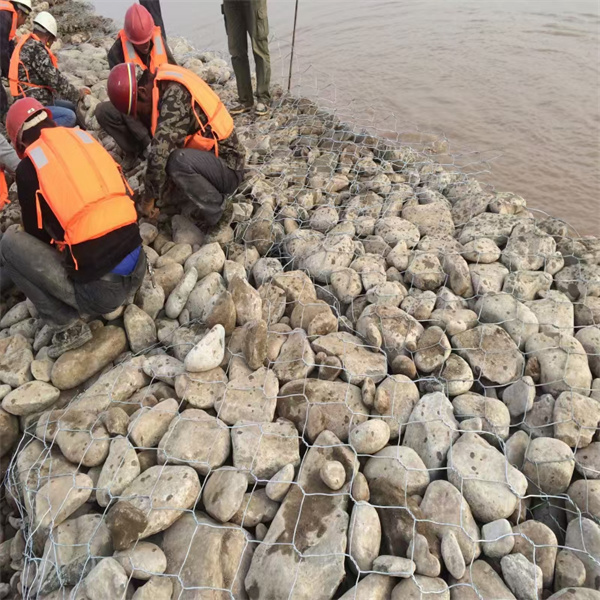okt. . 02, 2024 15:42 Back to list
Optimal Gabion Wire Mesh Size for Best Performance and Durability in Landscaping
Exploring the Best Gabion Wire Mesh Size
Gabion structures have gained significant popularity in civil engineering, landscaping, and environmental projects due to their strength, versatility, and aesthetic appeal. These wire mesh containers are filled with stone, gravel, or other materials, and they serve various purposes such as retaining walls, slope stabilization, and erosion control. However, one of the critical factors that determine the effectiveness and durability of gabions is the size of the wire mesh used. In this article, we will explore the best gabion wire mesh size for different applications.
Understanding Gabion Wire Mesh
Gabion wire mesh is designed to confine stones in a structured manner. It is manufactured from various metals, with galvanized steel being the most popular due to its resistance to corrosion. The wire mesh typically comes in different sizes and configurations, which can significantly impact the performance of the gabion structure.
The size of wire mesh refers to both the gauge of the wire and the dimensions of the openings or cells in the mesh. The standard mesh sizes range from 2 inches to 6 inches, although variations may exist depending on the manufacturer and specific application.
Choosing the Right Size
When selecting the best gabion wire mesh size, several factors must be considered
1. Application The intended use of the gabion will heavily influence the wire mesh size. For example, if the structure is meant for erosion control or slope stabilization, a mesh size of 2 inches to 4 inches is generally acceptable. This size allows for effective containment of rocks while ensuring stability against soil movement.
best gabion wire mesh size

2. Stone Size The size of the stones or fill material used within the gabions is another critical factor. As a rule of thumb, the mesh opening should be at least 1.5 times the size of the average stone used for filling. For instance, if you plan to use stones that are approximately 3 inches in diameter, a mesh size of about 2 inches is ideal. This ensures the stones remain contained while preventing smaller debris from escaping.
3. Environmental Conditions If the gabion will be exposed to severe weather conditions, including heavy rainfall or flooding, opting for a tighter mesh size (such as 2 inches) can provide additional security. This is particularly important in riverbanks or coastal areas where the risk of erosion is high.
4. Aesthetic Consideration For landscaping projects, the visual appeal might also influence your choice of wire mesh size. Smaller mesh sizes may offer a more refined appearance, allowing for the use of decorative stones. Conversely, larger mesh openings might lend an earthy, rustic look to the construction.
5. Regulatory Requirements In some regions, local building codes might dictate specific standards regarding wire mesh sizes for gabion structures. It’s essential to check with local authorities to ensure compliance with any relevant regulations.
Conclusion
Selecting the best gabion wire mesh size is crucial for the success of any gabion project. It requires careful consideration of the application, the size of filling material, environmental factors, aesthetic requirements, and regulatory obligations. For general purposes, a mesh size between 2 inches and 4 inches is often recommended, but specific projects may necessitate adjustments based on unique conditions.
Ultimately, investing time in researching and selecting the appropriate wire mesh size will enhance the durability and effectiveness of gabion structures, providing long-lasting solutions for erosion control, landscaping, and environmental remediation. Whether you are a civil engineer, landscape designer, or a DIY enthusiast, understanding gabion wire mesh sizes will empower you to create strong and resilient structures that meet your project needs.
-
Why PVC Coated Gabion Mattress Is the Best Solution for Long-Term Erosion Control
NewsMay.23,2025
-
Gabion Wire Mesh: The Reinforced Solution for Modern Construction and Landscape Design
NewsMay.23,2025
-
Gabion Wall: The Flexible, Seismic-Resistant Solution for Modern Landscaping and Construction
NewsMay.23,2025
-
Gabion Wall Solutions: The Durable, Decorative, and Affordable Choice for Every Landscape
NewsMay.23,2025
-
Gabion Basket: The Durable and Flexible Alternative to Traditional Retaining Walls
NewsMay.23,2025
-
Gabion Basket: The Proven Solution for Slope Stability and Flood Control
NewsMay.23,2025
-
Versatility of Chain Link Fence Gabion
NewsMay.13,2025






